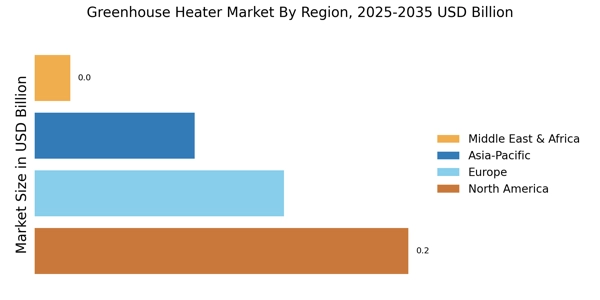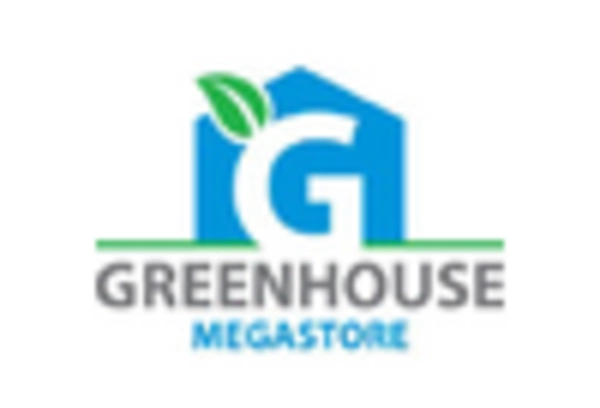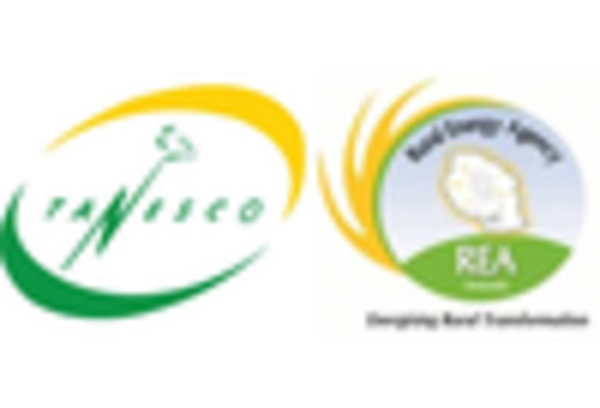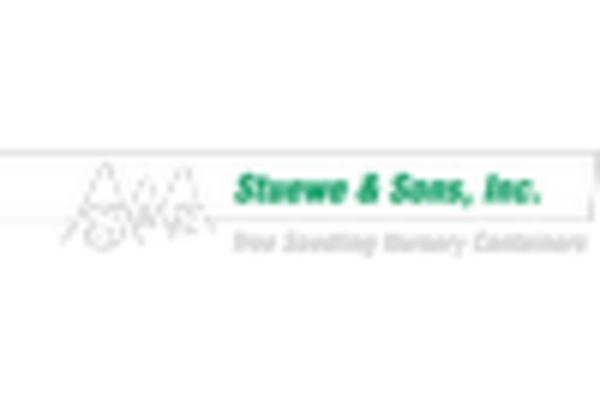Growing Awareness of Sustainable Practices
The growing awareness of sustainable practices among consumers and producers is significantly influencing the Greenhouse Heater Market. As environmental concerns rise, there is a marked shift towards sustainable heating solutions that minimize carbon footprints. Many greenhouse operators are now seeking heaters that utilize renewable energy sources, such as solar or biomass, to reduce reliance on fossil fuels. This trend aligns with broader sustainability goals and regulatory frameworks aimed at reducing greenhouse gas emissions. The market for eco-friendly greenhouse heaters is anticipated to grow, with a focus on products that not only meet heating needs but also contribute to environmental stewardship. Consequently, the Greenhouse Heater Market is likely to experience a transformation as sustainability becomes a core consideration in heating solutions.
Rising Demand for Year-Round Crop Production
The increasing demand for year-round crop production is a primary driver of the Greenhouse Heater Market. As consumers seek fresh produce throughout the year, growers are compelled to invest in greenhouse technologies that facilitate continuous cultivation. This trend is particularly evident in regions with harsh climates, where traditional farming is not feasible during certain seasons. The market for greenhouse heaters is projected to grow significantly, with estimates suggesting a compound annual growth rate of around 8% over the next five years. This growth is driven by the need for efficient heating solutions that can maintain optimal growing conditions, thereby enhancing yield and quality. Consequently, the Greenhouse Heater Market is likely to see a surge in demand as more agricultural stakeholders recognize the benefits of controlled environment agriculture.
Supportive Government Policies and Incentives
Supportive government policies and incentives play a crucial role in shaping the Greenhouse Heater Market. Many governments are implementing programs aimed at promoting sustainable agriculture and energy efficiency, which often include financial incentives for greenhouse operators to adopt advanced heating technologies. These policies may encompass grants, tax credits, or subsidies that lower the initial investment costs associated with purchasing and installing modern heating systems. As a result, more growers are likely to invest in greenhouse heaters that align with these initiatives, thereby enhancing their operational efficiency. The Greenhouse Heater Market is expected to benefit from this supportive regulatory environment, as it encourages the adoption of innovative heating solutions that contribute to both economic and environmental goals.
Technological Advancements in Heating Systems
Technological advancements in heating systems are reshaping the Greenhouse Heater Market. Innovations such as energy-efficient heaters, smart thermostats, and automated climate control systems are becoming increasingly prevalent. These technologies not only improve energy efficiency but also enhance the overall effectiveness of heating solutions. For instance, the integration of IoT devices allows for real-time monitoring and adjustments, optimizing energy use and reducing operational costs. The market is witnessing a shift towards more sophisticated heating solutions that can adapt to varying climatic conditions. As a result, the Greenhouse Heater Market is expected to expand, with a notable increase in the adoption of advanced heating technologies that cater to the specific needs of greenhouse operators.
Increased Investment in Controlled Environment Agriculture
Increased investment in controlled environment agriculture (CEA) is a significant driver of the Greenhouse Heater Market. As urbanization continues to rise, the need for efficient food production systems within city limits has become paramount. Investors are increasingly recognizing the potential of CEA to provide fresh produce locally, reducing transportation costs and enhancing food security. This trend is supported by advancements in greenhouse technologies, including sophisticated heating systems that ensure optimal growing conditions year-round. The market is projected to benefit from this influx of investment, with estimates indicating a potential doubling of the greenhouse area dedicated to CEA in the coming years. Thus, the Greenhouse Heater Market stands to gain from the growing emphasis on innovative agricultural practices.


















Leave a Comment